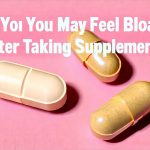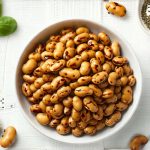Bloating is an incredibly common digestive complaint, affecting millions worldwide. It’s often dismissed as simply “having gas” but can be a truly uncomfortable experience, causing abdominal distension, pain, and even impacting daily activities. While many associate bloating with specific foods like beans or broccoli, the culprits are frequently far more hidden – lurking in seemingly innocuous ingredients within processed foods, beverages, and even health supplements. Understanding these hidden sources is the first step towards managing discomfort and regaining control over your digestive well-being. It’s important to remember that everyone reacts differently; what causes bloating for one person might not affect another, making pinpointing individual triggers a complex but worthwhile pursuit.
The frustrating aspect of bloating often stems from its ambiguity. Symptoms can be vague and inconsistent, making it difficult to connect them back to specific dietary choices. Many people unknowingly consume ingredients that contribute to digestive distress without realizing it, simply because these substances don’t register as obviously problematic. This article will delve into some of the most common hidden ingredients responsible for bloating, offering insights into why they cause issues and potential strategies to mitigate their effects – not as a replacement for professional medical advice, but as a tool for informed self-care and dietary awareness.
Sugar Alcohols & Artificial Sweeteners
Sugar alcohols and artificial sweeteners are widespread in “diet” or “sugar-free” products, marketed as healthier alternatives to sugar. However, these compounds can wreak havoc on the digestive system for many individuals. Common examples include sorbitol, mannitol, xylitol, erythritol, and isomalt (sugar alcohols), alongside aspartame, sucralose, and saccharin (artificial sweeteners). The issue lies in their incomplete absorption by the small intestine. Because they aren’t fully digested, they travel to the large intestine where bacteria ferment them, producing gas as a byproduct – leading directly to bloating, gas, and often diarrhea. – This fermentation process is what causes the discomfort.
The degree of intolerance varies significantly between individuals. Some people can tolerate small amounts without issue, while others experience significant symptoms even with minimal consumption. Erythritol generally tends to be better tolerated than other sugar alcohols because a larger percentage of it’s absorbed in the small intestine, leaving less for fermentation. However, even erythritol can cause problems in sensitive individuals or when consumed in large quantities. It’s also important to recognize that many “sugar-free” products contain combinations of these sweeteners, potentially compounding the effect.
Beyond direct fermentation, some artificial sweeteners have been linked to alterations in gut microbiota – the delicate ecosystem of bacteria within our digestive system. Disrupting this balance can further contribute to bloating and other digestive issues. Reading ingredient labels carefully is crucial. Look for any mention of “-ol” suffixes (indicating sugar alcohols) or the names of common artificial sweeteners. If you suspect these are contributing to your bloating, consider eliminating them from your diet temporarily to see if symptoms improve.
FODMAPs: Beyond Just Sugar Alcohols
FODMAP stands for Fermentable Oligosaccharides, Disaccharides, Monosaccharides and Polyols. It’s a group of short-chain carbohydrates that are poorly absorbed in the small intestine. While sugar alcohols fall under the “polyols” category within FODMAPs, the spectrum is much broader. – This means many seemingly healthy foods can be bloating triggers. Fructans (found in wheat, onions, garlic), lactose (in dairy products), fructose (in fruits and honey), and galactans (in legumes) are all examples of FODMAPs that can contribute to digestive distress.
The underlying mechanism is similar to sugar alcohols: undigested FODMAPs reach the large intestine where they’re fermented by bacteria, producing gas and causing bloating. The amount of FODMAPs a person can tolerate depends on their gut health and sensitivity. A low-FODMAP diet, often guided by a registered dietitian, involves temporarily restricting high-FODMAP foods to reduce symptoms, then gradually reintroducing them to identify individual triggers. – This isn’t meant to be a long-term restriction but rather a diagnostic tool.
It’s vital not to self-diagnose or drastically restrict your diet without professional guidance. A low-FODMAP diet can potentially lead to nutrient deficiencies if not managed properly. Resources like the Monash University FODMAP Diet app provide detailed information about the FODMAP content of various foods and are a valuable tool for those exploring this approach.
Hidden Sources in Unexpected Places
Beyond obvious sources, FODMAPs and sugar alcohols often hide in unexpected places. Many processed foods use inulin as a fiber source; it’s a fructan and therefore a high-FODMAP ingredient. Sugar-free gums and mints are notorious for containing sorbitol or xylitol. Even some seemingly healthy snacks, like protein bars or granola, may contain these ingredients to enhance sweetness or texture.
Medications and supplements can also be sneaky sources of bloating triggers. Some medications use sugar alcohols as fillers or binders. Similarly, certain vitamin supplements might include excipients that contribute to digestive upset. Always read the ingredient list carefully on all products, not just food items. – Pay attention to inactive ingredients too!
A helpful strategy is to keep a detailed food diary, noting everything you eat and drink, along with any associated symptoms. This can help identify patterns and pinpoint hidden triggers that might otherwise go unnoticed. If bloating persists, consider tests that match symptoms like bloating and fatigue to explore further.
Sodium & Artificial Additives
Sodium plays a crucial role in fluid balance within the body. However, excessive sodium intake can lead to water retention, contributing significantly to bloating. While most people associate high sodium with salty snacks, it’s often hidden in processed foods, canned goods, and even seemingly healthy options like bread and cereals. – The cumulative effect of these hidden sources can be substantial. Many restaurants also use generous amounts of sodium to enhance flavor, further exacerbating the issue.
Artificial additives, such as preservatives and emulsifiers, are added to food to extend shelf life, improve texture, or enhance appearance. Some of these additives have been linked to digestive issues and bloating in susceptible individuals. For example, carrageenan (a thickening agent) and guar gum (used as a stabilizer) can both contribute to gas production and discomfort in some people. Artificial colors and flavors may also disrupt gut health for certain individuals.
The challenge lies in identifying these hidden sources. Reading ingredient labels is paramount, but understanding the various names for sodium (e.g., monosodium glutamate, sodium benzoate) and artificial additives can be tricky. – Becoming a label detective is essential! Reducing processed food intake and opting for whole, unprocessed foods whenever possible are key strategies to minimize exposure to these potential bloating triggers. For more guidance on dietary changes, explore neutralizing ingredients that counter digestive irritation.
The Role of Gluten & Dairy
Gluten, a protein found in wheat, barley, and rye, can cause bloating in individuals with celiac disease or non-celiac gluten sensitivity. Celiac disease is an autoimmune disorder triggered by gluten ingestion, leading to damage in the small intestine. Non-celiac gluten sensitivity causes similar digestive symptoms but without the intestinal damage. – Even if you don’t have either condition, a general sensitivity can still cause bloating.
Dairy intolerance or lactose malabsorption is another common contributor to bloating. Lactose, the sugar found in milk and other dairy products, requires an enzyme called lactase for digestion. Individuals with lactose malabsorption lack sufficient lactase production, leading to undigested lactose fermenting in the large intestine – resulting in gas and bloating. There are varying degrees of lactose intolerance; some people can tolerate small amounts of dairy while others experience significant symptoms even with minimal consumption.
Addressing Inflammation & Gut Health
Chronic inflammation within the gut can exacerbate bloating and digestive discomfort. Several factors contribute to gut inflammation, including a diet high in processed foods, stress, lack of sleep, and imbalances in gut microbiota. – A healthy gut is crucial for optimal digestion. Incorporating anti-inflammatory foods into your diet, such as fruits, vegetables, fatty fish, and probiotics (found in fermented foods like yogurt or kefir), can help reduce inflammation and improve gut health.
Stress management techniques, like yoga, meditation, or deep breathing exercises, are also essential. Chronic stress can disrupt digestive function and contribute to bloating. Getting adequate sleep is equally important; sleep deprivation can negatively impact gut microbiota and increase inflammation. Ultimately, a holistic approach that addresses both diet and lifestyle factors is key to managing chronic bloating and promoting long-term digestive well-being. Remember to consult with a healthcare professional for personalized advice and to rule out any underlying medical conditions. Hidden signs that call for advanced digestive diagnostics can help determine the root cause of chronic issues, while understanding how testing explains bloating that won’t go away provides valuable insight. If dietary changes prove insufficient, exploring scans that look for hidden digestive scar tissue might be necessary to identify structural issues and consider stir-fry combinations that won’t cause bloating for a gentle dietary approach.


















